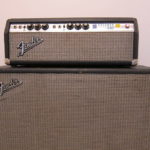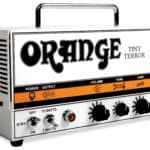You need more gain. We get it.
That tone won’t dial it by itself, and a beast of an amp as the 5150 or its cousins will surely come a long way in the process.
But you might be asking yourself: “Which one should I get?”
It’s not a simple choice, since there are many versions of the same idea, all claiming to improve upon the original 5150.
We will see about that…
If you want the short answer, here it is:
The main differences between 5150 versions are: The 5150 is the original and the same as the 6505. The 6505+ and the 5150 II are also the same and have improved cleans. The 6534 and 5150 III EL34 have EL34 power tubes as Marshall amps. The 5150 III has a third channel which makes it more versatile.
In this article, we will talk about the different versions of the 5150 amp, then we will put them side by side to give you a clear comparison between them. Finally, we will give you some insights about which one you should choose.
Let’s get to it!
Peavey 5150 main characteristics
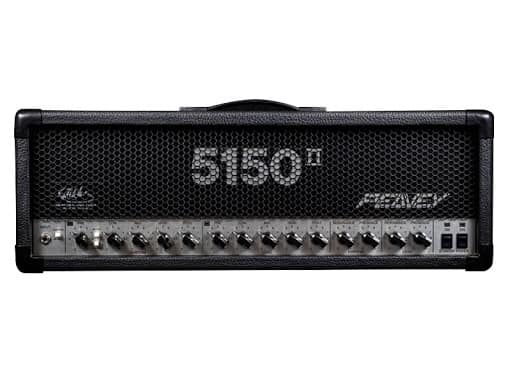
The 5150 was first introduced in 1992. As you should know, this was Eddie Van Halen’s signature amplifier, and that says a lot about its tone.
The 5150 is a gain monster that’s still popular today. Its tone is unique and the weapon of choice for many players from different latitudes of the heavily distorted guitar genre spectrum.
As for its clean tones… Well, you shouldn’t be asking about them if you’re looking for one of these. They are the more lacking aspect of this amp, but you can’t get everything. You have to make compromises.
Here are some of the most important specs that define the sound of the 5150:
| Spec | Peavey 5150 |
| Preamp tubes | 5 12AX7 tubes |
| Power tubes | 4 6L6GC tubes |
| Output power | 120 Watts |
| Channels | 2, rhythm and lead |
| Notes | The original version |
Peavey 6505 main characteristics
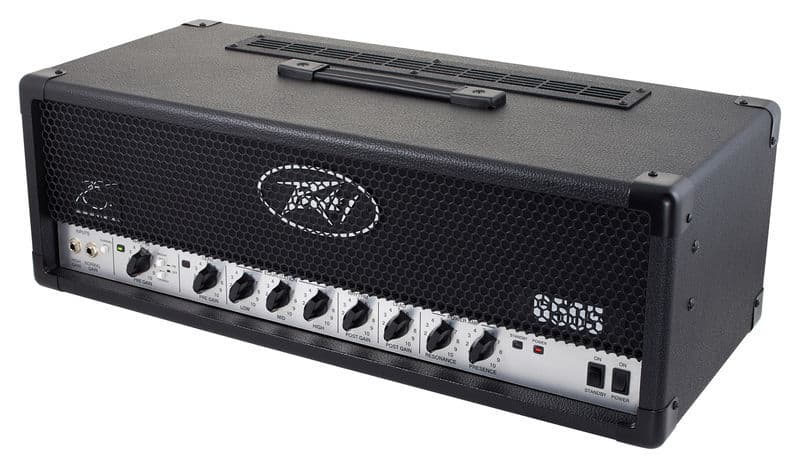
After Van Halen and Peavey parted ways in 2004, the 5150 model still produced by the company was renamed 6505.
6505 was chosen in celebration of Peavey’s 40th anniversary (1965 to 2005).
This amp is almost the same as the 5150 with a difference in the brand of the power tubes it is shipped with. We will talk in more depth about this in our “main differences” section below.
The 6505 also incorporated a phase inverter slot for one of the 12AX7 tubes. This might impact the overall “fizzines” of the sound, but it’s said to be an almost inaudible difference.
The 6505 specs are as follows:
| Spec | Peavey 6505 |
| Preamp tubes | 5 12AX7 tubes |
| Power tubes | 4 6L6GC tubes |
| Output power | 120 Watts |
| Channels | 2, rhythm and lead |
| Notes | Original specs, different brand |
Peavey 6505 MH main characteristics
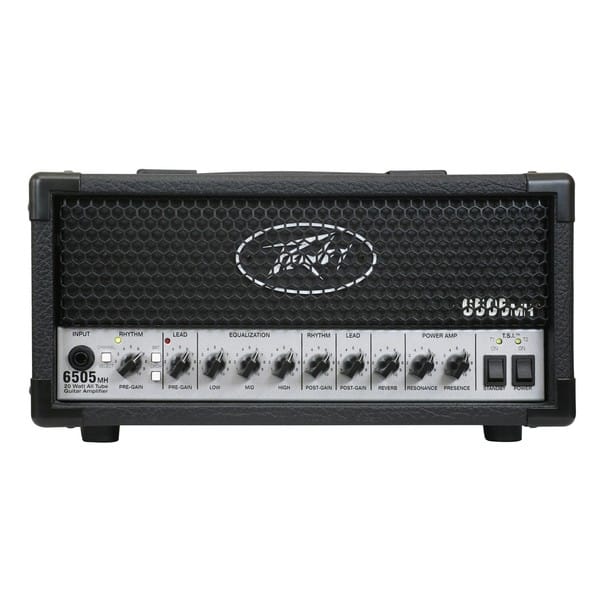
In 2015 Peavey introduced the 6505 MH. MH stands for Mini Head and it’s a small form factor version of the classic 6505 (and hence the 5150).
This little monster is a smaller, more affordable bedroom version that retains the original voicing of the classic.
It incorporates modern options that make the playing experience much more accessible.
For instance, it has a USB recording output, headphone output, and even a built-in attenuator.
Of course, the tone is not exactly the same as its big brothers because there’s less headroom and it also uses different power tubes, but it’s a great alternative for bedroom players that want some heavy distortion-capable little amp.
| Spec | Peavey 6505 MH |
| Preamp tubes | 3 12AX7 tubes |
| Power tubes | 2 EL84 tubes |
| Output power | 20 / 5 / 1 Watts (switchable) |
| Channels | 2, rhythm and lead |
| Notes | Lower output, EL84 power section, same voicing |
Peavey 6505+ and EVH 5150 II main characteristics

The Peavey 6505+ and the EVH 5150 II are the same amp.
When Peavey and Van Halen parted ways in 2004, the 5150 was renamed by Peavey to 6505 and its second version became the 6505+.
Van Halen then started working with Fender on its EVH brand making the 5150 II which has the exact same specs as the 6505+.
This amp features an extra 12AX7 in the preamp stage, it prevents the clean channel from breaking up as easily. This is a strong point for this version, given that the original 5150’s clean tones were not very good.
Apart from this, the specs are not that different. There are some construction differences, but the spirit is the same.
Players argue that the 6505+ (5150 II) has slightly less gain, but it isn’t that noticeable. Also, many say that this iteration sounds tighter, as the original 5150 sounds heavier. This might be left to personal perception.
The 6505+ / 5150 II main specs are:
| Spec | Peavey 6505+ / EVH 5150 II |
| Preamp tubes | 6 12AX7 tubes |
| Power tubes | 4 6L6GC tubes |
| Output power | 120 Watts |
| Channels | 2, rhythm and lead |
| Notes | Improved clean channel, subtle tone difference |
Peavey 6534+ main characteristics
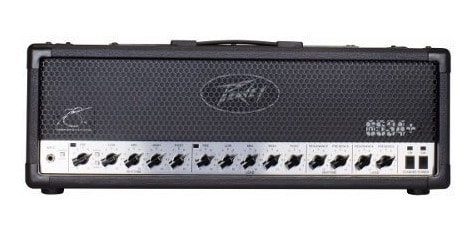
In 2010 Peavey launched the 6534+ which is mainly a 6505+ with EL34 power tubes.
The amp remained the same, but its power section was replaced to attend to the demand for high-gain EL34 powered amplifiers. The current market leaders of this segment were both European: Marhsall and ENGL.
The tonal quality of the 6534+ of course is different than the one of its siblings. Some might describe it as being more Marshall sounding. And it might be a good definition since it takes from that brand’s toolbox.
The 6534+ main specs are:
| Spec | Peavey 6534+ |
| Preamp tubes | 6 12AX7 tubes |
| Power tubes | 4 EL34 tubes |
| Output power | 120 Watts |
| Channels | 2, rhythm and lead |
| Notes | Improved clean channel, EL34 more Marshall like high gain tone |
EVH 5150 III main characteristics
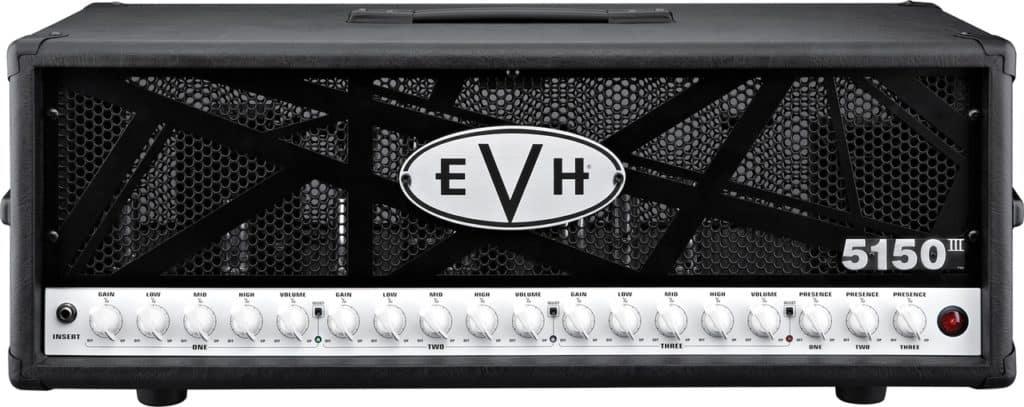
The partnership between Eddie Van Halen and Fender continued over to the 5150 III, the most modern version of the classic amp.
This iteration comes with more modern looks and even a new whole channel.
Other than this addition, there’s nothing much new.
But don’t get me wrong, a new dedicated clean channel in this amp is a big deal. It provides increased versatility and, even if it won’t ever be a Fender Deluxe Reverb, it gives the player more options.
And for gearheads like us, more options are good.
The 5150 III as you might expect has differences in its tone, as any new version of an amp will inevitably have. And which one is better might come down to player preferences
EVH also introduced the Stealth line of these amps which incorporates Eddie’s custom modifications. This has a revoiced crunch channel and an increased gain lead channel.
Finally, there is also an EL34 power tube version of the 5150 III.
Here are the specs for this bunch:
| Spec | 5150 III 100 | 5150 III 100S | 5150 III 100 EL34 |
| Preamp tubes | 8 12AX7 tubes | 8 12AX7 tubes | 8 12AX7 tubes |
| Power tubes | 4 6L6GC tubes | 4 Shugang 6L6GC matched tubes | 4 Apex EL34 matched tubes |
| Output power | 120 Watts | 120 Watts | 120 Watts |
| Channels | 3, clean, rhythm, and lead | 3, clean, rhythm, and lead | 3, clean, rhythm, and lead |
| Notes | New clean dedicated channel, subtle tonal differences | Tuned voicings of crunch and lead channel to Van Halen’s specs | New clean dedicated channel, EL34 more Marshall like high gain tone |
EVH 5150 III LBX main characteristics
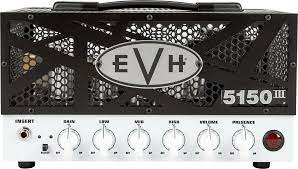
The EVH brand also offers a variety of small format 5150 III heads. These are the LBX series.
These output 15 watts and come with a built-in attenuator.
All of these models are 2 channel, and like the 6505 MH, their power tubes are EL84s.
The LBX I and II differ mostly in their channel voicings, The I having the highly-acclaimed red red “Full burn” channel at its disposal.
The LBX S for the Stealth series comes with custom Van Halen voicings different aesthetics and a bias control port. It has the green clean channel and the red “Full burn” channel.
These little amps main specs are:
| Spec | 5150 III LBX | 5150 III LBX S | 5150 III LBX II |
| Preamp tubes | 5 12AX7 tubes | 4 12AX7 tubes | 4 12AX7 tubes |
| Power tubes | 2 EL84 tubes | 2 EL84 tubes | 2 EL84 tubes |
| Output power | 15 Watts (switchable to ¼ output) | 15 Watts (switchable to ¼ output) | 15 Watts (switchable to ¼ output) |
| Channels | 2, blue (crunch) and red (lead) | 2, green (clean) and red (lead) | 2, green (clean) and blue (crunch) |
| Notes | Lower output, blue and red channels | Lower output, green and red channels | Lower output, green and blue channels |
Main differences between 5150 based amps
There are many variations of the original 5150 but it’s impossible to say that one is better than the others. Each one offers something slightly different that might appeal to a specific audience, but they’re excellent pieces of gear overall.
Many players point out that the different brands of the tubes used in the different iterations of the amp (especially compared to the gold standard defined by the original 5150) have a significant impact on tone.
It’s unlikely, although, that nowadays an original 5150 will preserve its original tubes since they deteriorate with time and it’s very common to have them replaced.
It’s also very hard to find the exact same brand as the original “Sylvania” ones that were later replaced in production with “Ruby” branded alternatives. Many “old-school” tube suppliers are currently out of business, and the surpluses if any, are very low in stock.
The biggest leap in tone and versatility is undoubtedly the incorporation of a third channel made by EVH.
However, most purists argue that the original 5150 is still the tone king for heavily distorted sounds.
Since we have looked over many versions of this amp, we will put only the most iconic or representative ones side to side. Here they are:
| Spec | 5150/6505 | 5150 II/6505+ | 5150 III |
| Preamp tubes | 5 12AX7 tubes | 6 12AX7 tubes | 8 12AX7 tubes |
| Power tubes | 4 6L6GC tubes | 4 6L6GC tubes | 4 6L6GC tubes |
| Output power | 120 Watts | 120 Watts | 120 Watts |
| Channels | 2, rhythm and lead | 2, rhythm and lead | 3, clean, rhythm, and lead |
| Notes | The original version | Improved clean channel, subtle tone difference | New clean dedicated channel, subtle tonal differences |
The differences with the smaller form factors and the EL34 versions are pretty obvious and we leave it to you to compare between and against them.
Which one should you choose?
Choosing an amp is a very complicated decision and we wouldn’t like to point you in some direction recklessly.
We always encourage our readers to test the gear for themselves since what you can learn from a blog or a YouTube video is never what it will be true to YOU.
If it’s possible to shoot out some of the amps in person or at least the ones that interest you the most, it will be surely a very much informative experience than reading other people’s opinions.
However, if you want to start somewhere, here are our main recommendations when looking for a 5150 amp:
- If you just want amazing distortion, go get a 5150 or a 6505
- If you think that maybe there’s a chance you will need to play a clean line, try out a 6505+ or a 5150 II
- If you like a more modern and versatile amp, with the 5150’s spirit inside it, check out a 5150 III
- If you really like Marshall high-gain tones, try out any of the EL34 powered versions as the 6534+ or the 5150 III EL34
- If you want to play in your bedroom and prefer a lower output piece of gear, get a 6505 MH or a 5150 III LBX

Hello there, my name is Ramiro and I’ve been playing guitar for almost 20 years. I’m obsessed with everything gear-related and I thought it might be worth sharing it. From guitars, pedals, amps, and synths to studio gear and production tips, I hope you find what I post here useful, and I’ll try my best to keep it entertaining also.



